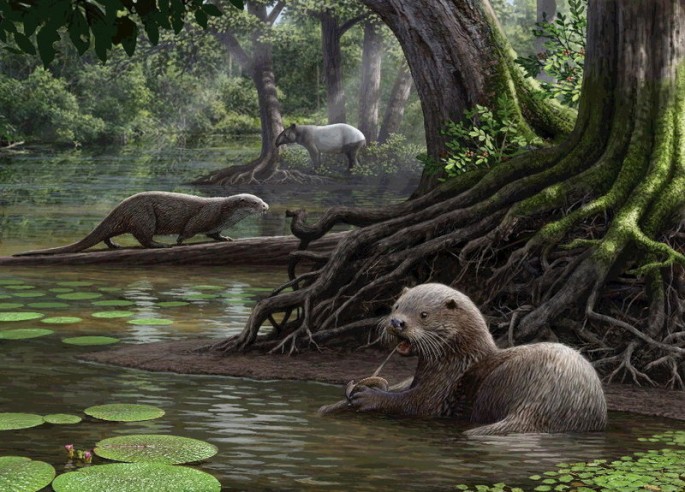The discovery of a prehistoric giant otter species in China was recently published by a team of scientists in the Journal of Systematic Paleontology, according to a report by NPR's The Two-Way.
The research team came upon an impeccably preserved cranium in an open lignite mine back in 2010.
Denise Su, the head of paleobotany and paleoecology at the Cleveland Museum of Natural History, tells The Two-Way that the prehistoric otter species is as big as a wolf, "two to three times larger than any modern otter species."
Despite being well-preserved, the fossilized cranium was flattened to a thickness of about an inch and a half. Due to its fragility, physical reconstruction was rendered impossible.
"...What we did is we took CT scans of the cranium, and then we digitally constructed it," says Su.
One of the findings from the cranium suggest that the prehistoric otter species had teeth similar to that of a badger's. Due to that tidbit, the otter species was named Siamogale melilutra, with meles being badger and lutra otter in Latin.
The most important contribution of the cranium, however, is that it gave researchers a picture of how otters evolved over time. For one, the giant otters possessed large, round-cusped teeth, which they now conclude was a result of convergent evolution and not an inherited feature from a common ancestor.
Prior to the discovery of the cranium in 2010, the same team of researchers also found bones from the same species in 2009.
The discovery of the giant otter species in China also posed a question about the creature's size, and how it was able to move in land and water.
"A lot of times in modern carnivores, the large size is partly due to subduing prey, so their prey is bigger and the carnivores also get bigger," says Su.
However, the scientists believe that the otter species most likely went after smaller prey like mollusks.






















